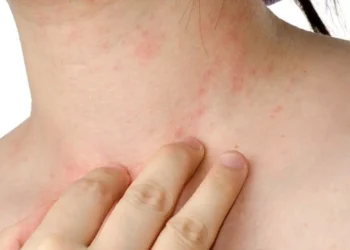Pneumonia is a common respiratory infection that can affect people of all ages, but it can be particularly concerning when it comes to children. Recognizing the signs of pneumonia early on is crucial for prompt medical attention and effective treatment.
Here are six key ways parents can identify pneumonia in their children.
1. Persistent Cough
One of the early indicators of pneumonia in children is a persistent cough. While coughs are common in childhood, a cough associated with pneumonia may be more severe and accompanied by a rattling or wheezing sound. If your child’s cough persists for more than a week or is worsening over time, it’s essential to consult a healthcare professional.
2. Fever and Chills
Pneumonia often presents with a high fever and chills. If your child’s temperature rises significantly and is accompanied by shivering or chills, it may be an indication of an underlying respiratory infection. Monitoring your child’s temperature regularly, especially if they seem unwell, is crucial for early detection.
Read Also- 7 Things Every Expectant Mother Should Avoid
3. Rapid or Labored Breathing
Keep an eye on your child’s breathing patterns. Rapid or labored breathing, where the chest appears to move more quickly than usual, can be a sign of pneumonia. Additionally, you might notice flaring nostrils or the use of extra muscles around the chest and neck while breathing. If you observe these signs, seek medical attention promptly.
4. Fatigue and Weakness
Pneumonia can drain a child’s energy, leading to increased fatigue and weakness. If your child is unusually tired, lethargic, or lacking interest in activities they typically enjoy, it could be a signal of an underlying respiratory infection. Pay attention to changes in their overall energy levels and behavior.
5. Chest Pain
Children with pneumonia may experience chest pain or discomfort. They might express this as a sharp pain, pressure, or a general sense of unease in the chest area. While it can be challenging for younger children to articulate chest pain, older kids may be able to describe the sensation. Any complaints of chest discomfort should be taken seriously and evaluated by a healthcare professional.
6. Color Changes in Lips and Nails
Keep an eye on your child’s skin color, particularly in the lips and nails. Bluish or grayish discoloration can indicate a lack of oxygen, which is a serious concern in cases of pneumonia. If you observe any abnormal color changes, seek immediate medical attention.
Being vigilant about potential signs of pneumonia in children is crucial for early detection and timely intervention. If you notice any combination of persistent cough, fever, rapid breathing, fatigue, chest pain, or changes in skin color, consult a healthcare professional promptly. Remember, early diagnosis and treatment significantly improve the outcomes for children with pneumonia. Always prioritize your child’s health and seek medical advice when in doubt.










